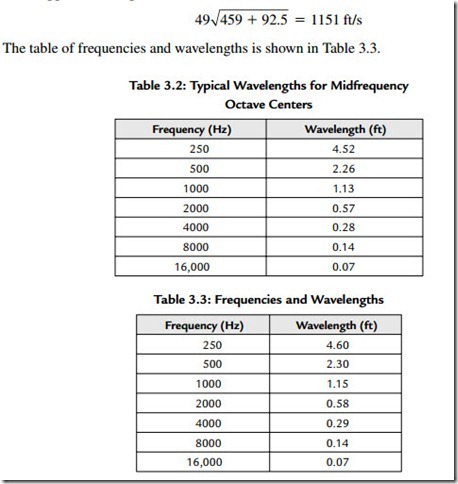Typical Wavelengths
Some typical wavelengths for midfrequency octave centers are shown in Table 3.2. Now suppose the temperature increases 20°F to 92.5°F.
Suppose we had “tuned” to the peak of a 1000-Hz standing wave in a room first at 72.5°F and then later at 92.5°F. The apparent frequency shift would be
where 1151 is the velocity (ft/s) at the temperature of measurement and 1.13 is the wavelength at the original temperature.
Related posts:
Interfacing and Processing:Balanced Input
Earthing and Bonding:Equipotential Bonding
Power and Energy:Measuring Power and Energy
ELECTRIC MOTORS:SPECIFIC LOADINGS AND SPECIFIC OUTPUT
Digital Audio Production:Disks and Other Peripheral Hardware
Troubleshooting variable speed drives:Quadrant thyristor-controlled rectifier
Consequent Pole Motors:Four-Speed Consequent Pole Motors
REFERENCES OF The Skin Effect
NETWORKING WIRED AND WIRELESS:WIRELESS NETWORKS
Flow switches and sensors:Flow Sensors
Appendix part1
The Essential Guide to Semiconductors – How Chips Are Designed
AUDIO AND VIDEO SYSTEMS - CONTROL CIRCUITS
Electric Motor Manual – INSTALLATION METHODS – Motor thermal protection minimizes downti...

